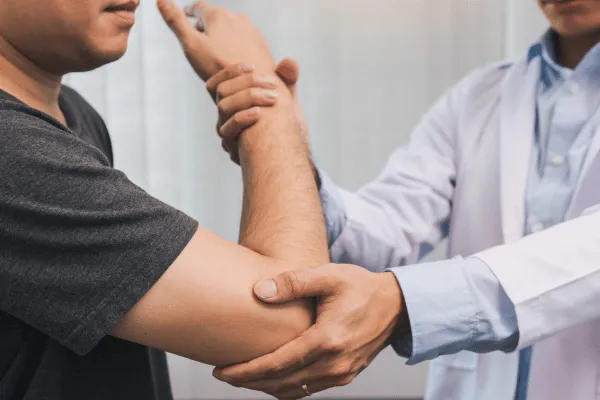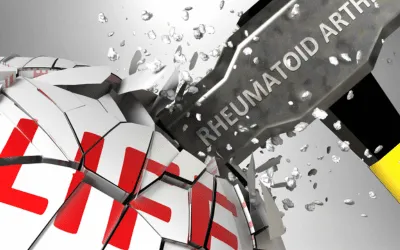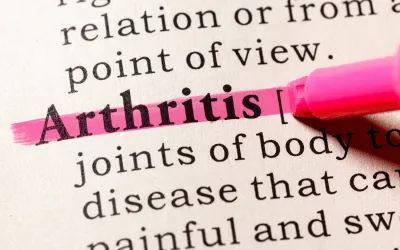About Arthritis
As the nation’s #1 cause of disability, arthritis affects nearly 60 million adults and 300,000 children. Over 100 types of arthritis and related conditions damage the joints and often other organs.
How can we assist you?
Helpful Tools for You

Identifying the Signs of Arthritis with Care and Understanding
Understanding arthritis symptoms can be challenging due to their diverse nature. However, this checklist is designed to assist you and your doctor in pinpointing the specifics
Stiffness
If you experience arthritis, you might notice some stiffness and difficulty moving your joints. Sharing the times when you feel the most stiffness can aid your doctor in pinpointing the specific type of arthritis you might have. When do you typically experience the most stiffness?
In the morning? (If so, for how long?)
After engaging in physical activities?
When you've been seated for extended periods?
Post-exercise?
Swelling
The area surrounding your joints might feel warm or appear reddened and swollen. You might experience discomfort either consistently or only when pressing on the area. It's possible you could feel a sensation of fluid within the swollen region. This could be due to inflammation in the tissue around the joint. Please keep your doctor informed if these symptoms are intermittent or persist for an extended duration.
Where are you experiencing discomfort and tightness?
It's really helpful for your doctor to understand which specific joints cause you the most discomfort. Different arthritis types have distinct patterns, impacting certain joints or perhaps one side of the body more than the other. Any of the following areas are particularly troublesome for you?
Fingers
Hands
Wrists
Elbows
Knees
Ankles
Feet
Shoulders
Hips
Jaw
Lower back
Understanding the Characteristics of Joint Symptoms
It's essential to know which joint symptoms you're experiencing. Identifying specific symptoms can help your doctor determine whether you might have arthritis or another condition. Have you noticed any of the following?
Stiffness in the joints
Pain in the joints
Warmth around a joint area
Redness near a joint
Joint swelling that persists for over three days
Joint swelling that happens more than three times in a month
Trouble moving a joint
Other Symptoms
Certain forms of arthritis may present symptoms that aren't solely tied to the joints. Your physician will be keen to identify or inquire about such symptoms, including:
Feeling unusually tired
Skin that's itchy with a scaly texture
Alterations to the appearance of fingernails and toenails
Occurrence of skin rashes
Episodes of fever
Unintended weight loss
Patchy hair loss or thinning around the hairline.
Before your doctor's appointment, it would be helpful if you could monitor your symptoms for several weeks. Please note any swelling or stiffness, its duration, and any remedies that alleviate the discomfort. This will aid in obtaining a precise diagnosis, paving the way for an effective treatment plan to safeguard your mobility and enhance your well-being.
Effects of Arthritis

Cause of Disability
In the United States, 23% of all adults, or more than 54 million people, have arthritis. It is a leading cause of work disability, with annual costs for medical care and lost earnings of $303.5 billion.

Workforce Effects
Sixty percent of US adults with arthritis are of working age (18 to 64 years). Arthritis can limit the type of work they are able to do or keep them from working at all.

Global Impact
In fact, 8 million working-age adults report that their ability to work is limited because of their arthritis. For example, they may have a hard time climbing stairs or walking from a parking deck to their workplace.
Promoting Interventions That Reduce Arthritis Pain
American Arthritis Foundation recognizes several proven approaches to reduce arthritis symptoms:
Be active. Physical activity—such as walking, bicycling, and swimming—decreases arthritis pain and improves function, mood, and quality of life. Adults with arthritis should move more and sit less throughout the day. Getting at least 150 minutes of moderate-intensity physical activity each week is recommended.
Protect your joints. People can help prevent osteoarthritis by avoiding activities that are more likely to cause joint injuries.
Talk with a doctor. Recommendations from health care providers can motivate people to be physically active and join a self-management education program. Should your arthritis be interfering with your activities of daily living you may be a candidate to receive many new treatments, and learn how to reverse the arthritis condition.
Have a question?
We're Here to Help
By providing my phone number, I agree to receive text messages from the business.

